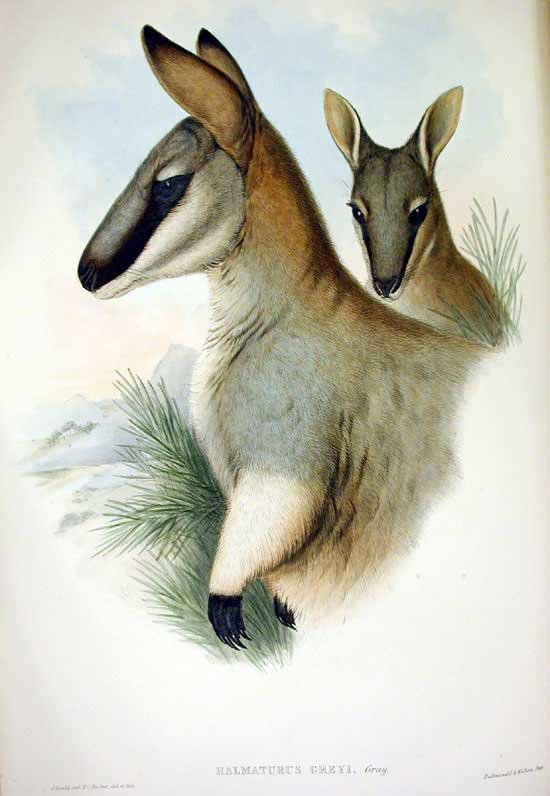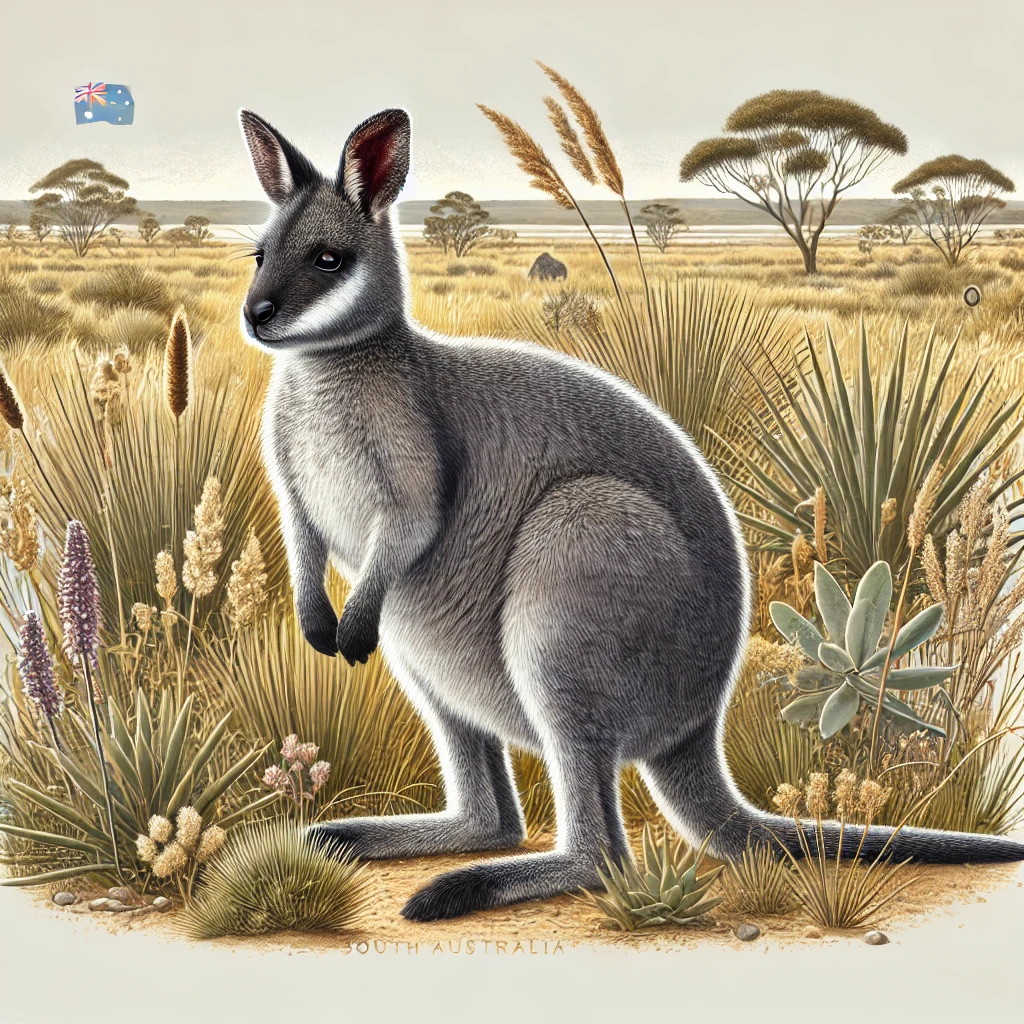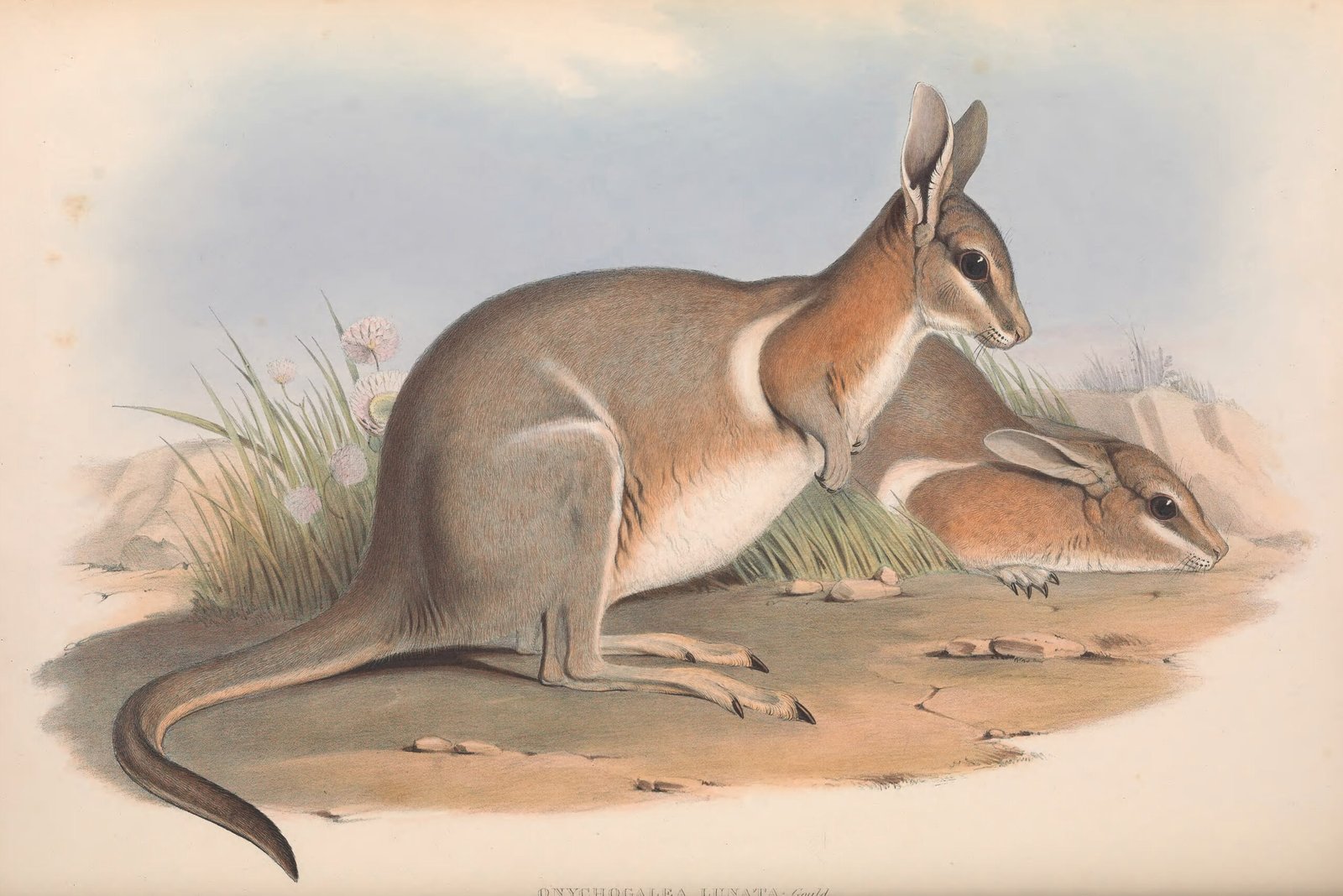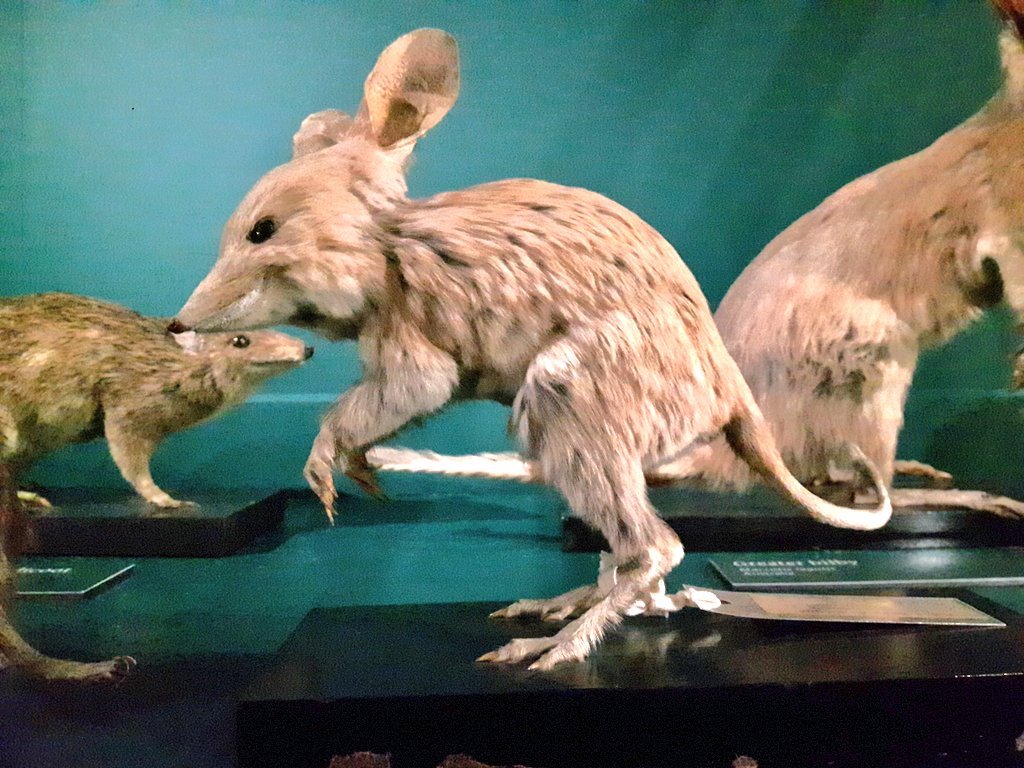Exploring the Toolache Wallaby: A Lost Species of the Australian Landscape
Introduction:
The Toolache Wallaby, scientifically known as Macropus greyi, was a graceful and slender marsupial native to the grasslands and open woodlands of South Australia and Victoria. Known for its distinctive black and white facial markings and swift movements, this wallaby once thrived in its native habitat. However, due to habitat destruction, hunting, and predation by introduced species, the Toolache Wallaby was declared extinct in the 1940s. Its extinction highlights the vulnerability of Australia’s unique wildlife to human activities and environmental changes.

Facts:
| Attribute | Details |
|---|---|
| Scientific Name | Macropus greyi |
| Common Names | Toolache Wallaby |
| Year Declared Extinct | 1940s |
| Kingdom | Animalia |
| Phylum | Chordata |
| Class | Mammalia |
| Order | Diprotodontia |
| Family | Macropodidae |
| Genus | Macropus |
| Species | M. greyi |
| Natural History and Origin | Native to the grasslands and open woodlands of South Australia and Victoria |
| Physical Information | Medium size, about 60-70 cm in body length |
| Appearance | Grey fur with distinctive black and white facial markings |
| Scientist Names | Described by naturalists in the 19th century |
| Region | South Australia and Victoria |

Appearance:
The Toolache Wallaby was a medium-sized marsupial, measuring about 60-70 cm in body length with a tail of similar length. It had soft, grey fur with distinctive black and white markings on its face and neck. The wallaby’s slender build and long limbs made it an agile and swift mover, well-suited for navigating the grasslands and open woodlands of its habitat.
Distribution:
Historically, the Toolache Wallaby inhabited the grasslands and open woodlands of South Australia and Victoria. It thrived in areas with abundant vegetation and open spaces, where it could forage for food and find shelter.

Habits and Lifestyle:
The Toolache Wallaby was primarily nocturnal, foraging for food during the night and resting in sheltered areas during the day to avoid predators and the heat. It was a social animal, often seen in small groups. The wallaby’s diet consisted mainly of grasses, herbs, and leaves, which provided the necessary nutrients for its survival.
Physical Characteristics:
The Toolache Wallaby had several adaptations suited to its environment. Its grey fur provided camouflage against the grassy landscape, while the distinctive facial markings may have played a role in social interactions. The wallaby’s long limbs and powerful hind legs were adapted for swift and agile movement, allowing it to escape predators and navigate its habitat efficiently.
Diet and Nutrition:
As a herbivore, the Toolache Wallaby primarily fed on a variety of plant materials, including grasses, herbs, and leaves. These food sources were rich in nutrients and provided the wallaby with the necessary energy for its active lifestyle. The wallaby’s foraging habits played a role in maintaining the health of its grassland ecosystem by promoting plant growth and seed dispersal.
Behavior:
Toolache Wallabies exhibited social behavior, often forming small groups or pairs. They communicated through vocalizations, scent markings, and body language, which helped establish social bonds and coordinate group activities. During the breeding season, males competed for the attention of females, and the resulting offspring were cared for in the mother’s pouch until they were old enough to forage independently.
Cause of Extinction:
The extinction of the Toolache Wallaby in the 1940s was primarily due to habitat destruction, hunting, and predation by introduced species such as foxes and cats. Agricultural expansion and land clearing reduced the available habitat for the wallabies, while hunting for fur and sport further depleted their numbers. The introduction of non-native predators posed an additional threat, as the wallabies had no natural defenses against these new predators. Despite conservation efforts, these factors ultimately led to the extinction of the Toolache Wallaby.
FAQs:
| Question | Answer |
|---|---|
| What led to the extinction of the Toolache Wallaby? | Habitat destruction, hunting, and predation by introduced species. |
| When did the Toolache Wallaby go extinct? | The 1940s. |
| What did the Toolache Wallaby eat? | It fed on grasses, herbs, and leaves. |
| Why is the Toolache Wallaby significant? | It highlights the impact of human activities on Australia’s unique ecosystems and the importance of conservation efforts. |
| Are there efforts to study the Toolache Wallaby? | Ongoing research aims to understand its ecology and the factors leading to its extinction. |

Categories:
- Extinct Mammals
- Australian Wildlife
- Conservation Efforts
- Grassland Ecosystems
These details should provide a comprehensive overview of the Toolache Wallaby, ideal for educational and conservation-focused content on your website.
Views: 2



